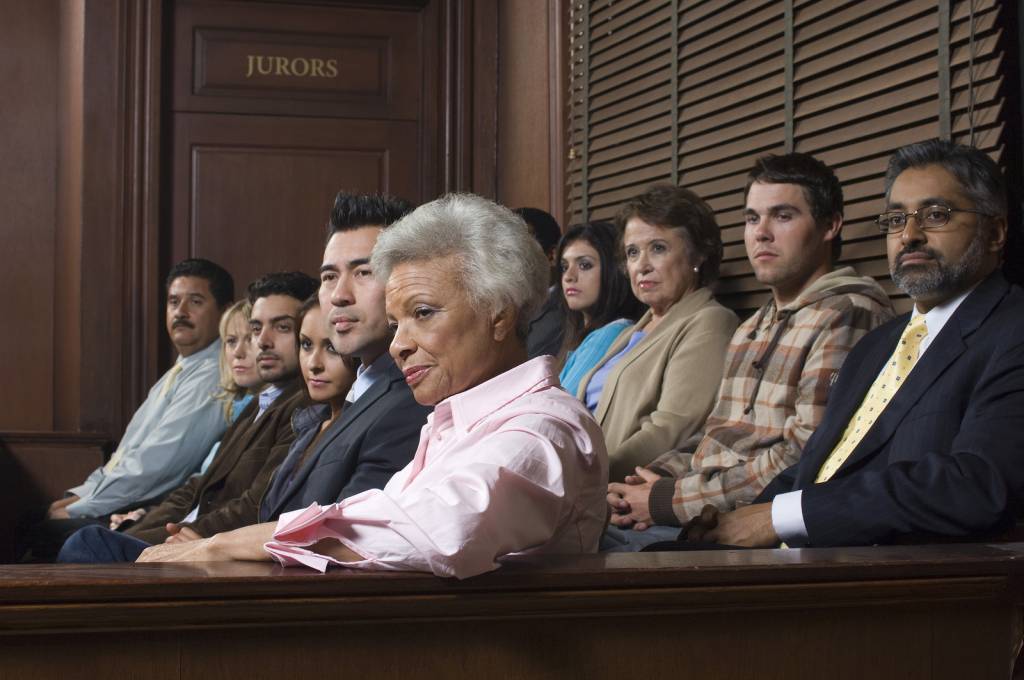Do police officers in the United States really plant evidence in order to frame and convict criminal suspects? We’ve seen it in movies like Training Day and in dozens of television dramas, and there’s an occasional accusation in the news of real-life evidence-planting by the police – like in the O.J. Simpson murder trial, now more than twenty years ago. But is evidence-planting really a current and widespread police practice? A lot of drug crimes attorneys believe that it is, and over the years, a lot of retired cops have said it is. In 2016, one spectacular story is once again putting the question of evidence-planting by the police squarely in the public eye.
That story is the ten-part true-crime documentary from Netflix, Making a Murderer, that has gripped the nation. The series was released by Netflix in December of 2015, at a time when police departments and the courts are already the targets of severe and seemingly-nonstop criticism, suspicion, and scrutiny. Millions have now seen Making a Murderer, and every day, more people are watching the highly-controversial series for the first time. It’s the real-life story of a Wisconsin man, Steven Avery, who was exonerated in 2003 after serving eighteen years behind bars for a sexual assault that the evidence now proves he did not commit. That injustice alone is a story that’s difficult to believe, but Avery’s eighteen years in a Wisconsin prison is only the beginning of Making a Murderer. After bringing a multi-million-dollar lawsuit against those responsible for the miscarriage of justice, Steven Avery was arrested again in 2005 – this time for a young woman’s murder – and he was found guilty of that murder in 2007.
ABOUT THE AVERY CASE
Since its release in December, Making a Murderer has skyrocketed in popularity. Even Hollywood celebrities are weighing in on the case and discussing whether Avery and his nephew, Brendan Dassey, also convicted of the same murder, are genuinely guilty. Whether or not Avery killed photographer Teresa Halbach, Making a Murderer presents a powerful argument that the police in Manitowoc County planted physical evidence to ensure that Steven Avery would be convicted. Even viewers who believe that Avery is guilty of the Halbach murder have been unable to ignore the evidence of police misconduct, and they’re saying so loudly. Petitions, letter-writing campaigns, op-ed columns, and websites have all condemned the behavior of the police in the Avery case and have called for reforms and investigations. Many viewers also believe that Steven Avery may be innocent and insist that he should be retried. More than 200,000 people have signed petitions.
Making a Murderer also provides several motives for the evidence-planting it alleges, and those motives are revenge and money. After nearly two decades in state prison for a rape he did not commit, Avery was suing Manitowoc County, its former sheriff, and its former district attorney in federal court for $36 million. Lt. James Lenk was a longtime Manitowoc County Sheriff’s detective who allegedly discovered critical physical evidence linking Steven Avery to Teresa Halbach’s murder. Lenk and Sheriff’s Sgt. Andrew Colborn discovered a key to Halbach’s RAV4 on the carpeted floor of Avery’s bedroom despite several earlier searches by other investigators. Lenk was also at the Avery property weeks later when a bullet fragment was found in Avery’s garage. In 2016, Lenk is retired from the Manitowoc County Sheriff’s Office. He now resides in Arizona and refused to comment to USA Today about the case or about the Netflix documentary.
After watching Making a Murderer, there’s no doubt whatsoever that the murder prosecution of Steven Avery was, to say the very least, mishandled. Avery was suing the Manitowoc County Sheriff’s Office, so the investigation was supposed to be handled by officers from neighboring Calumet County. Yet evidence “discovered” by Manitowoc officers, despite their conflict of interest in the case, was allowed at Avery’s murder trial. The evidence is itself confusing, and it doesn’t match up with or verify any of the several conflicting theories of the murder offered by the prosecution. Steven Avery was nevertheless convicted of murder, and on June 1, 2007, he was sentenced to life in prison without the possibility of parole. In August 2011, a state appeals court denied Avery’s appeal for a new trial, and the Wisconsin Supreme Court also declined to hear his case. Avery now has new attorneys who filed a new appeal on his behalf in January.
“IT’S A HIDDEN CRIME”
Does evidence-planting happen only in murder cases or in particular police departments? Or is the practice genuinely widespread and possibly even out of control? Our drug crime attorneys know that evidence-planting happens in all parts of the country and not just in murder cases, because federal law enforcement authorities sometimes apprehend – and then prosecute – local police officers who have planted evidence. In New Jersey, for example, four Camden police officers were prosecuted in 2013 for planting evidence. The officers stole drugs from suspects and failed to report those drug seizures. They used the stolen drugs to plant on other suspects. All four were convicted.
In 2009, the FBI investigated police officers in Tulsa who were planting evidence and stealing money from drug dealers. In New York City in 2008, one police officer testified that he planted drugs on suspects to help another officer make his arrest quota. Bowling Green State University professor Philip Stinson is an ex-cop who has compiled a comprehensive database of police misconduct. Even with his extensive data, Stinson says of evidence-planting, “It’s a hidden crime. There’s not much we know about it. No government agencies track this kind of thing.”
HOW TO PROTECT YOURSELF
The reality is that nobody really knows for sure how often police officers plant evidence or how many officers are guilty of the practice. What should you do if you’ve been charged with a crime and you believe that the police planted evidence to frame you? Obviously, that’s a dicey situation for anyone. Alleging that “I was set up” is a typical claim made by thousands of suspects who turn out to be guilty as charged. In some states, however, if you’re charged with a crime and you believe you are being framed, your lawyer can bring a legal motion to determine if a police officer has been suspected of evidence-planting or evidence-tampering in the past, has been the target of lawsuits, or has been the subject of citizen complaints. If the planted evidence were drugs and you are not a drug user, you may need to ask some character witnesses to testify on your behalf. You’ll require the advice and services of a good criminal defense lawyer, and in southern California, you should retain the services of an experienced Los Angeles criminal defense attorney.
Your lawyer might also question the other police officers involved or have a private investigator do the questioning. If one of them was uncomfortable with the way the investigation or arrest took place, that officer might assist your case in some way – anonymously and behind the scenes – but don’t expect a police officer to testify in public against other police officers on your behalf. You might also look to the physical evidence. If a police officer’s fingerprints or DNA is on a piece of evidence, and your prints and DNA are not, your attorney may be able to cast doubt on the legitimacy of that evidence. Tampering with evidence or planting false evidence is a serious crime in all fifty states. In California, planting evidence is a misdemeanor – unless you’re a police officer, and then it’s a felony punishable by up to five years in prison. Here’s the precise language of California Penal Code 141a and 141b:
- (a) Except as provided in subdivision (b), any person who knowingly, willfully, and intentionally alters, modifies, plants, places, manufactures, conceals, or moves any physical matter, with specific intent that the action will result in a person being charged with a crime or with the specific intent that the physical matter will be wrongfully produced as genuine or true upon any trial, proceeding, or inquiry whatever, is guilty of a misdemeanor.
- (b) Any peace officer who knowingly, willfully, and intentionally alters, modifies, plants, places, manufactures, conceals, or moves any physical matter, with specific intent that the action will result in a person being charged with a crime or with the specific intent that the physical matter will be wrongfully produced as genuine or true upon any trial, proceeding, or inquiry whatever, is guilty of a felony punishable by two, three, or five years in the state prison.
If you are charged with a crime and you believe those police officers planted evidence to frame you, your situation is not hopeless. When evidence is planted – or when there’s an allegation that evidence has been planted – criminal cases quickly become quite difficult and complicated, so you must be represented by a seasoned drug crimes attorney who has handled comparable cases successfully in the past. Contact the best criminal defense lawyer you can find, someone who will go the distance to advocate on your behalf. In southern California, if you’re charged with any felony or misdemeanor, contact an experienced Los Angeles criminal defense attorney as quickly as possible.








